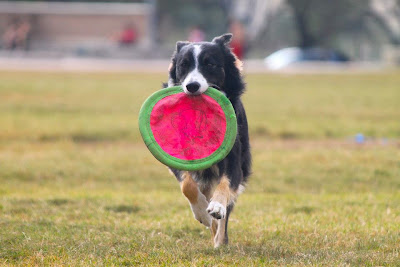recall: to call back; summon to return
This is the definition that dictionary.com gives. A "come" when called is highly important. Calling a dog away from something dangerous can save their life. Different behaviors are crucial, though in my opinion, a recall is probably the most important thing a dog can learn.
First off, lets start with how one builds a recall. Coming back to their owner should be a pleasant experience for a dog. The toughest thing I have had to learn myself is that even if that dog doesn't come at first or bolts off even if you tell them to stay, when they finally do return, as upset as one may be, the experience still has to be pleasurable for the dog. Many people think a dog should come by choice, but it has to be enticing. Hence, we return to our motivation post from the other day. What motivates the dog to come when called? Is the reward greater than the reinforcement of the environment around the dog? Another thing to remember is that it isn't a bribe but teaching the dog that the choice of coming is better than staying away and therefore they receive a huge reward.
Recalls serve a bigger purpose than just having a dog that listens. It's about keeping an eye on your dogs and looking out for their safety as well as other dogs. Often than not, many of us poison our dogs' desire to come and a new word has to be used. Several people even include a behavior such as a nose touch to entice a dog to have to truly come all the way back. A nose touch allows for the behavior to become specific. Unless the dog returns and offers the required behavior completely, the reward is withheld. This allows the owner to maintain specific criteria when training and makes the behavior stronger than if one were to just ask for a response in the dog.
"A dog is the only thing on earth that loves you more than you love yourself." -Josh Billings
Make your dog love you more than anything else. I challenge you to make yourself the biggest value in your dogs' lives. Not only is is this going to increase your dogs' want to learn with you but it's going to make the relationship even more valuable. It's about focus, motivation and enjoying working together. Today isn't the question of what motivates your dog. Today, we need to figure out how to reward our dog and get the best recall ever. It's about keeping your dog happy and safe.
So, how FAST does your dog come back when called?


